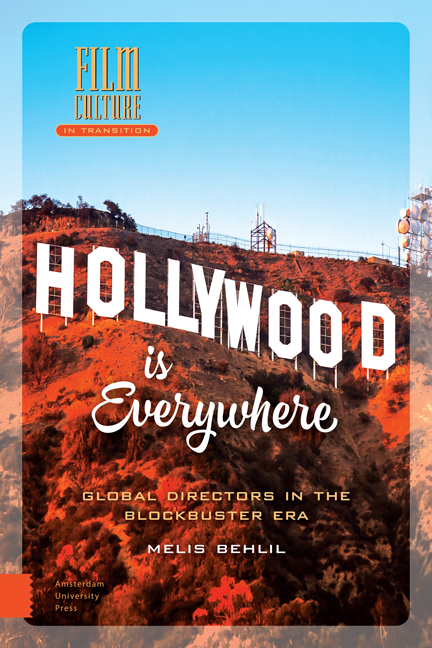Book contents
- Frontmatter
- Dedication
- Contents
- Acknowledgments
- Introduction: Hello Hollywood
- 1 Defining Hollywood
- 2 Cultural Work in a Globalizing World
- 3 Histories and Geographies of Global Directors
- 4 A View to a Franchise: James Bond
- 5 “Once More with the Volume Up”: Auto-remakes
- 6 I Want My MTV: Advertising and Music Videos
- 7 Conclusion: “Everywhere is Hollywood”
- Notes
- Bibliography
- List of Directors
- Index of Film Titles
- Index of Names
- Index of Subjects
- Film Culture in Transition
6 - I Want My MTV: Advertising and Music Videos
Published online by Cambridge University Press: 10 December 2020
- Frontmatter
- Dedication
- Contents
- Acknowledgments
- Introduction: Hello Hollywood
- 1 Defining Hollywood
- 2 Cultural Work in a Globalizing World
- 3 Histories and Geographies of Global Directors
- 4 A View to a Franchise: James Bond
- 5 “Once More with the Volume Up”: Auto-remakes
- 6 I Want My MTV: Advertising and Music Videos
- 7 Conclusion: “Everywhere is Hollywood”
- Notes
- Bibliography
- List of Directors
- Index of Film Titles
- Index of Names
- Index of Subjects
- Film Culture in Transition
Summary
One of the most famous television commercials of all time is a 60-second spot for Macintosh called 1984, shot by Ridley Scott for the Chiat\Day advertising agency. Within a drab dystopian setting, as suggested by the George Orwell novel of the same name, a young woman in vivid color, clutching a sledgehammer, is seen running towards a giant TV screen amidst hollow-eyed workers dressed in gray. She hurls the sledgehammer at the screen, shattering it. A voice-over is heard saying: “On January 24th, Apple Computer will introduce Macintosh. And you will see why 1984 won't be like 1984.” Although it ran only once, on January 22, 1984, during the Super Bowl game in the US, it received four major advertising awards that year, and in 1995 went on to be declared the best advertising commercial of the last 50 years. Its $400,000 budget allowed for high production values, reminding audiences of Ridley Scott's BLADE RUNNER, which had just been released in 1982.
1984 is significant on a number of levels. An ad that used cinematic language and was presented on television (yet only once), it is one of the earlier examples of media convergence, a term Henry Jenkins introduced to describe the “flow of content across multiple media platforms, the cooperation between multiple media industries, and the migratory behavior of media audiences.” Beyond being just a commercial or a movie, 1984 was an event (Twitchell 2001). It was an instance of an already famous feature-film director working on a commercial, a practice that has since become commonplace. As regards its production company, Ridley Scott Associates (RSA), 1984 is an example of a transnational production. Moreover, what happened to the advertising agency responsible for the commercial in the following years is a classical example of the conglomeration process that media and advertising companies have undergone since the 1980s. Chiat\Day was an agency based in Los Angeles, called “the hottest shop” in US advertising in the 1980s. In addition to working with the London-based RSA, the agency was the first in the US to adopt the British strategy of account planning. Nonetheless, Chiat\Day was still largely a national agency. Even though it purchased the Australian firm Mojo to become Chiat\Day\Mojo in 1990, it stood only at number 18 on the list of the largest US agencies based on worldwide income.
- Type
- Chapter
- Information
- Hollywood is EverywhereGlobal Directors in the Blockbuster Era, pp. 111 - 124Publisher: Amsterdam University PressPrint publication year: 2016



